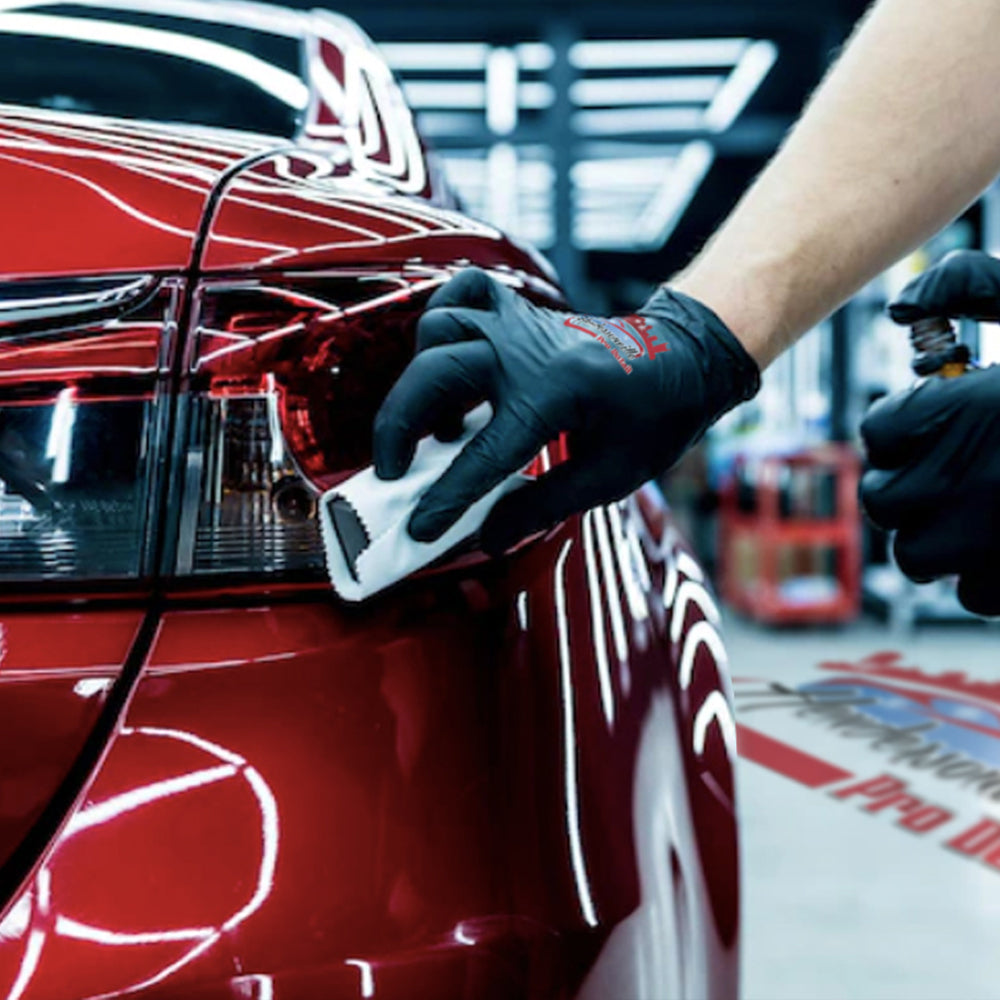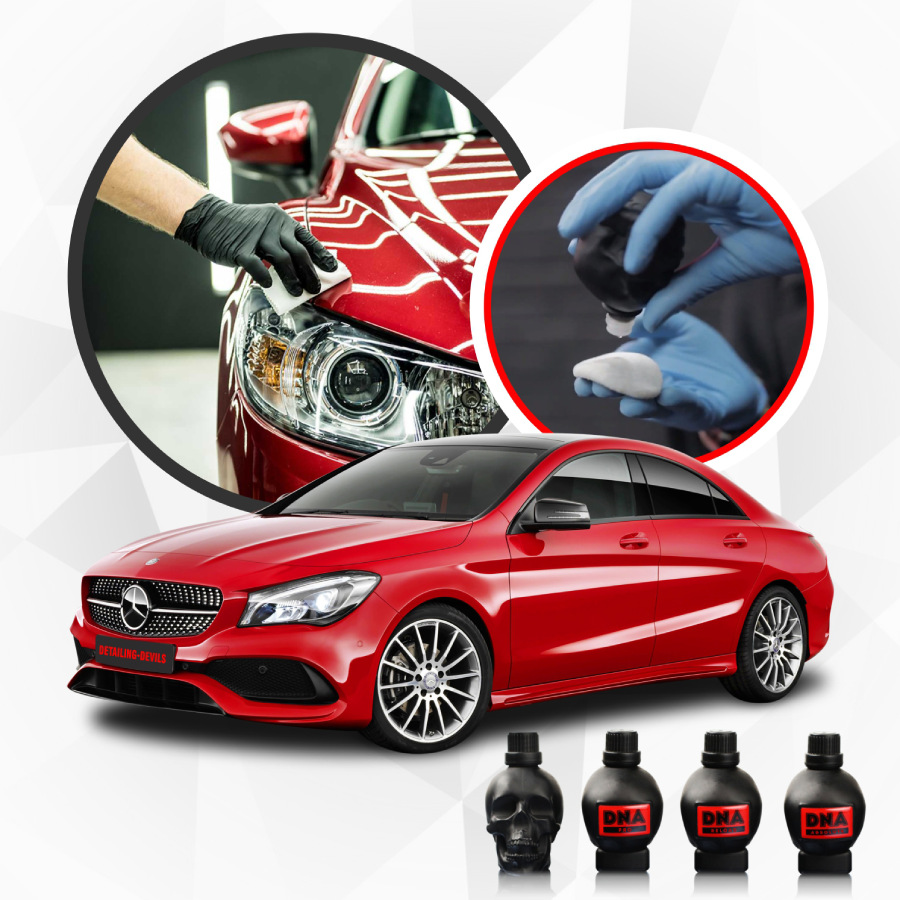Get the best value for your car with Quality Detail Ceramic Coating applied expertly.
Why Ceramic Coating Is the very best Option for Lasting Luster and Resilience
Ceramic layer has arised as a premium choice for those seeking to improve their automobile's look while making certain resilient defense. Its distinct formula enables it to develop a solid bond with the paint, developing a resilient barrier against environmental aspects. Unlike conventional wax, which needs constant reapplication, ceramic finishes offer an even more sustainable remedy that maintains a high gloss finish gradually. This conversation will discover the various benefits of ceramic finishings, exactly how they compare to traditional wax, and the very best methods for application and upkeep, leaving one to take into consideration the effects for their very own lorry treatment approach.
What Is Ceramic Finishing?
Ceramic layer is an advanced protective layer put on the exterior surfaces of lorries, designed to enhance both shine and longevity. This cutting-edge remedy includes a fluid polymer that chemically bonds with the car's factory paint. The outcome is a resistant finishing that gives outstanding protection versus ecological impurities, such as dust, UV rays, and chemical materials.
Generally composed of silicon dioxide (SiO2), ceramic coverings develop a hydrophobic surface area that fends off water and assists in easy cleaning. Unlike typical waxes or sealants, which give short-term security, ceramic finishings use lasting impacts, significantly extending the life expectancy of the vehicle's paintwork. Quality Detail Ceramic Coating. The application process requires precise preparation, consisting of comprehensive cleaning and decontamination of the car surface area to guarantee ideal bond
When used, ceramic layers treat to form a long lasting layer that boosts the vehicle's aesthetic appeal, supplying a shiny coating that enhances the depth of color. This innovative technology not just shields the automobile's exterior but also helps to preserve its value gradually. As an outcome, ceramic finishing has actually come to be a recommended selection among automotive enthusiasts and specialists looking for superior protection for their cars.
Benefits of Ceramic Covering
The benefits of using a ceramic layer extend well past plain looks, giving car owners with considerable long-term benefits. Among one of the most considerable advantages is boosted defense versus ecological contaminants. Ceramic finishes develop a hydrophobic surface area that fends off water, dirt, and grime, making it simpler to preserve a clean lorry while decreasing the frequency of laundries.
In addition, ceramic finishes use exceptional resistance to UV rays, which can create fading and oxidation of paint in time. By protecting against these damaging impacts, ceramic finishes help protect the automobile's original shade and coating, eventually prolonging the lifespan of the paint.
Moreover, the resilience of ceramic layers is significant - Quality Detail Ceramic Coating. Unlike conventional wax, which may need reapplication every few months, ceramic coatings can last several years with appropriate maintenance. This longevity translates to set you back financial savings for automobile owners, as they invest much less on reapplication and outlining solutions
Finally, ceramic layers supply a shiny coating that improves the overall more info here appearance of the lorry. This resilient sparkle not only boosts the vehicle's visual appeal yet additionally adds to its resale worth. In summary, the benefits of ceramic finishings are complex, providing considerable protection and aesthetic enhancements for lorry owners.

Contrasts With Traditional Wax
When comparing ceramic layers to conventional wax, numerous vital distinctions arise that highlight the advantages of modern safety modern technologies. Standard wax, usually derived from natural carnauba or artificial products, supplies a relatively short-lived sparkle, commonly lasting just a few weeks to a few months. In comparison, ceramic coatings offer a more resilient service, lasting numerous years when appropriately kept.
The chemical make-up of ceramic layers creates a covalent bond with the car's surface, creating a durable guard versus environmental impurities, UV rays, and chemical etching. Traditional wax lacks this level of bonding, making it much more at risk to use and degradation from warm, dampness, and unpleasant materials.

Application Process of Ceramic Finish

First, the car's surface area need to be extensively cleaned up and sanitized. This includes cleaning, claying, and potentially polishing to eliminate any kind of flaws or residues that might conflict with attachment - Quality Detail Ceramic Coating. After cleansing, it is critical to dry the surface totally, as any kind of moisture can jeopardize the covering's effectiveness
Following, the ceramic finish is applied in tiny areas making use of a specialized applicator. It is necessary to operate in controlled conditions, preferably in a shaded area to avoid early healing caused by sunlight. The coating is spread evenly and my sources allowed to bond with the surface area, developing a chemical bond that provides remarkable protection.
After application, the layer needs a curing period, which can vary depending upon the product utilized. Throughout this time, it is vital to avoid exposure to water and contaminants to permit the finishing to establish correctly. Appropriate application not just boosts the automobile's aesthetic charm however likewise makes sure long lasting defense versus ecological elements.
Upkeep Tips for Durability
Keeping a ceramic layer is essential for preserving its shine and safety qualities in time. Normal upkeep ensures that the finish remains to ward off contaminants and maintain its hydrophobic residential or commercial properties.
To start, wash your car regularly using a pH-neutral hair shampoo to avoid the buildup of dirt and crud. Prevent rough materials that could jeopardize the finishing; rather, choose microfiber wash mitts and soft drying towels. Additionally, utilizing a two-bucket laundry method can lessen the threat of scrapes.
After cleaning, consider using a maintenance spray designed particularly for ceramic finishes. This can you could try here increase the covering's hydrophobic attributes and enhance its gloss. It's also advisable to regularly check the finish for any kind of indications of destruction or damage, attending to issues without delay to stay clear of more degeneration.
Avoid vehicle parking under trees or in straight sunlight for extensive durations, as pollutants like sap or bird droppings can damage the covering. Lastly, consider professional describing every six to twelve months to invigorate the ceramic layer, ensuring it remains efficient and visually appealing. By adhering to these straightforward upkeep pointers, you can make the most of the longevity and performance of your ceramic covering investment.
Verdict
In recap, ceramic coating becomes a premium alternative for vehicle protection, offering enhanced durability and a long-term sparkle contrasted to standard wax. Its one-of-a-kind chemical residential properties create a resistant obstacle versus ecological impurities, UV rays, and oxidation, dramatically extending the aesthetic charm and value of the automobile. The reduced need for regular reapplications further highlights the cost-effectiveness of ceramic finishings as a sensible option for automotive care, guaranteeing long-lasting fulfillment for car proprietors.